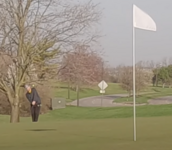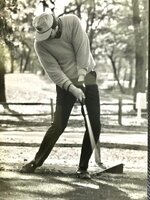- Joined
- Nov 1, 2023
- Messages
- 573
- Reaction score
- 311
there is a million ways to swing the golf club.But when it comes down to it.The impact zone is one area where the good players are very similar.One of my favorite books is the “impact zone” by Bobby Clambett.Which really focuses on that one area with many a good drill.Just for fun, post up your impact photos and let us guess how the shot turned out.















